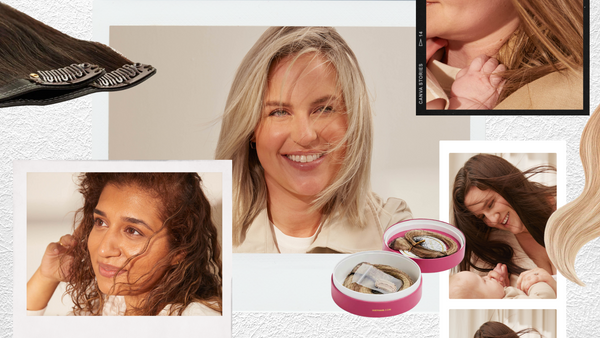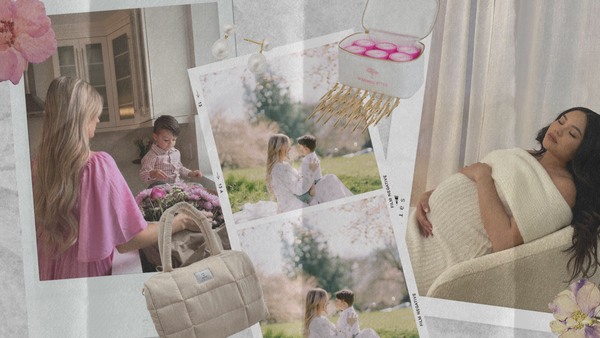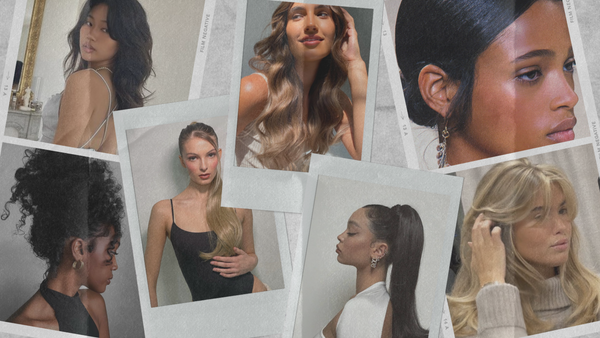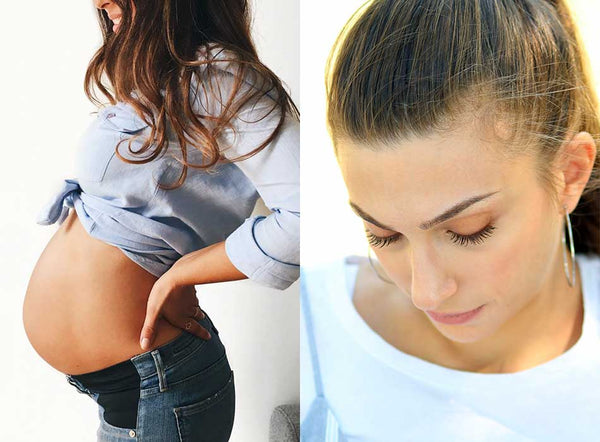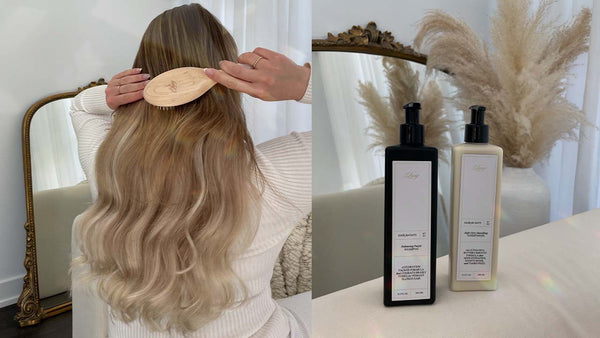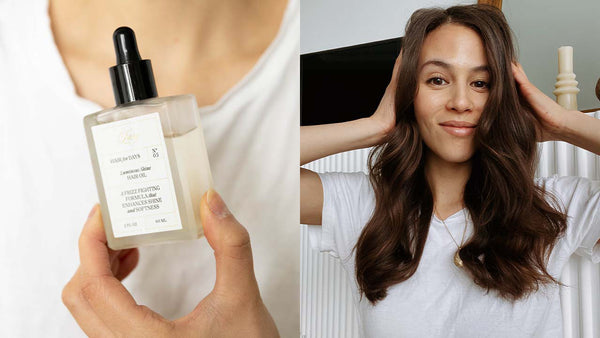The first step in knowing how to fix damaged hair is knowing the root of the damage.
From coloring, to split ends, UV damage to over styling, damaged hair is caused by both our own actions and external environmental factors. Damaged hair repair also comes in a variety of treatments and products, but before adding to cart on the best-reviewed hair products, make sure you understand what your hair needs.
It is important to note that hair is technically already dead. The hair follicle is the only “living” portion of the hair. Hair that has grown out contains no biochemical activity which is science speak to say that it is considered “dead”. The root of each strand of hair is where the living cells are that produce the hair shaft and the hair we visibly see. This is why fully repairing damaged hair is so difficult – but not impossible.
The best damaged hair repair is building healthy hair habits, helping to prevent further problems. We’ve rounded up the five most common causes of damaged hair and how to fix them.
How to fix damaged hair from an unbalanced diet
A balanced diet isn’t just good for your hair, it’s just plain good for you. Specific ingredients, however, such as protein omega-3, and biotin are all essential for long, thick, healthy hair. Think whole foods, fruits and veggies, and whole grains. Not only do these provide you with great hair, but skin, digestion and heart health also. Protein is essential for luscious hair, as well as iron, Vitamin A, and C. Daily supplements can help provide you with what your diet may be missing, but be sure to check with your doctor first.
As for those supplements that promise long, luscious hair specifically, be sure to carefully read the labels and ask your health professional.
 @maggiemccormack is wearing Chocolate Brown Halo hair extensions
@maggiemccormack is wearing Chocolate Brown Halo hair extensions
How to fix dry damaged hair
The lack of moisture makes hair prone to breakage. Dry hair is caused when there isn’t enough natural oils or moisture being produced and this is most commonly caused by over-washing your hair. Over washing can strip your hair of the natural oils it needs for optimal moisture. So, skip the daily wash and keep it to 2 to 3 times a week if possible.
Take a good look at the shampoo and conditioners you’re using too. Look for products that contain ingredients that pack in the moisture; avocado, olive oil, and argan oil are all great for helping moisturize (and strengthen) hair. Conditioner is especially important in preventing dry hair, but also fixing damaged hair. Focus conditioner on the mid-shaft to the ends of your hair, massaging it and leaving it in a minute or two longer than your shampoo. Be sure to rinse all the product out et voilà—one dry damaged hair repair tip that doesn’t require too much.
The weather is also a big factor in causing dry hair. In the winter, the air is obviously colder but also drier than those hot summer months. These environmental factors strip the hair of natural moisture and cause further problems like static. It’s good to adjust your conditioning routine slightly in the winter months to ensure your hair is getting the moisture it needs. If you want to know how to fix dry, damaged hair in the winter, add a hair mask or deep conditioning treatment to your hair routine for healthy hair and a little dose of self-love too—you deserve it, sis.
How to fix heat damaged hair
Oh, styling tools, how we love each and every one of you. Be it a blow dryer, hair straightener, curling iron – we all have our favorites and our go-to tools when we really want our hair style to turn heads. Yet, these amazing and useful tools are also one of the biggest causes of heat damaged hair – it’s no secret.
Do you use a heat-protectant every time you blow dry or flat iron your hair? Probably not, but it is an absolute must. Exposing hair to high heat without any protectant product creates damaged hair quicker and makes it harder to fix. Try limiting heat styling to once or twice a week and always, we repeat, always use a heat protectant serum or spray.
Another way to fix heat damaged hair? Fix the way you blow dry. It’s best to blow dry your hair after letting it air dry for a few minutes, and not when it is dripping wet. Blot your wet hair (do not rub!) with a microfiber towel if you don’t want to wait for it to air dry. If you’re using a brush when blow-drying, don’t pull too hard on the hair and look for a brush with smooth synthetic bristles for faster drying and less damage to the hair than those big, round brushes. Finally, pull the nozzle away from your head. Keeping the blow dryer about two inches away is effective in terms of drying and styling, but also much safer for your hair.
 @maggiemccormack is wearing Chocolate Brown Halo hair extensions
@maggiemccormack is wearing Chocolate Brown Halo hair extensions
Hair extensions are also an option to help prevent heat damage to your natural hair. With hair extensions, you can also style them pin-straight, blow them out in waves, or curl them. Alternating these styles between your natural hair and hair extensions will allow you to save your hair from heat styling damage and experiment with new looks. With clip in hair extensions like Luxy Hair, you can hang extensions from the Luxy Hair Extensions Carrier and easily style them ahead of work, going out with the girls, or a date. Having your har extensions pre-styled, saves time and your natural hair. Remember to spritz your extensions with heat protectant and keep your styling tools on low heat to help them last longer.
Coconut oil is a savior for heat damaged hair. Its makeup absorbs into the hair cuticles, helping to hydrate from the inside out. Pro tip: Use coconut oil before and after heat styling. There are many heat protectant products with coconut oil which will help preserve the hair’s natural moisture, while also providing a layer of protection. You can also use coconut oil as a mask or treatment post styling or washing. It also smells like a vacation, so why not?
How to fix damaged hair from coloring
Whether you go for regular dye jobs or love keeping up with the latest hair color trends, chemically treating the hair does serious damage. We get it – it’s hard not to go for a little or a lot of color (mermaid hair, anyone?) but there are steps that can help reduce the amount of damage.
For those with severely over-processed hair, the only damaged hair repair may be a big chop. For others, let’s follow these steps so it doesn’t get that bad.
Stick to more natural or close to natural colors, the rule of thumb is within three shades of your natural color. This will prevent you from having to bleach or over-process to achieve drastic colors (sorry, platinum and millennial pink). There’s no other way to say this – bleaching will always damage your hair, it’s best to minimize bleaching, or not do it at all. It strips the hair of its natural melanin that gives your hair its natural pigment. Those who’ve done it know it makes your hair dry, brittle, and prone to breakage. Bleach is usually an essential step when going from dark to light colors, but really should be done sparingly for the health of your hair.
Ditch the bleach and increase the time between dye jobs so you’re not exposing your hair to chemicals so frequently. You can help maintain your color by using hair color-specific products, washing your hair less frequently with cooler water and washing your hair less frequently.
Other common chemical treatments such as chemical straightening causes the same type of damage as coloring. Many of the same rules for dye apply—increasing the time between appointments, and also opting for safer options such as keratin straightening.
Another way to combat damage from coloring and other chemical processes is hair extensions. With a variety of colors and even styles such as ombre to choose from, wearing color-treated hair extensions saves your natural hair from damage, while giving you longer, fuller hair that looks like you just came straight from your colorist’s chair.
 @maggiemccormack is wearing Chocolate Brown Halo hair extensions
@maggiemccormack is wearing Chocolate Brown Halo hair extensions
How to fix damaged hair from skipping the salon chair
Let’s just put this myth to an end now. Skipping regular haircuts or trims to let your hair grow out isn’t making it any healthier – in fact it’s creating the opposite effect. According to one study, women on average get their hair cut about three times a year. Depending on your hair type and the overall health of your hair this may not be enough. Skipping regular haircuts can create split ends and eventually, those unfixable strands break off. Without regular trims hair can also become dry and look dull. If you use chemical treatments, not getting rid of the damaged hair weighs on the rest.
The best clip in hair extensions also give you longer, fuller hair you sometimes can’t achieve with natural hair. Being able to play with length and volume makes hair extensions an easy and stylish way to deal with poor growth or split ends between hair cuts. You don’t have to grow out your hair into dry, split ends to achieve length. Choose the right type of hair extensions that can help you achieve the length you want.
Let this be a friendly reminder to schedule your next cut. Regular hair appointments don’t have to be dramatic changes every time, getting frequent trims can help keep the hair healthy, avoid dry, split ends and make for hair that looks fuller, shinier, and longer.
Other causes of damaged hair, and how to fix them
Cotton pillowcases and towels – Everyday house essentials, major culprits of damaged hair. Both fabrics cause friction in the hair, especially when you’re using the towel to (gasp) rub your hair dry. Swap out your cotton pillowcase for silk or satin ones, to protect your hair while you sleep. Bonus: They are proven to be good for your skin too. Instead of terrycloth towels, swap for microfiber and even then, blot or pat hair dry.
UV damage – Like cold air, environmental factors like sun exposure can make hair more prone to breakage. Lighter hair such as blonde or grey are also more susceptible to UV damage. Reach for sun or UV protectant product when in sunny climates and/or wear a hat if you’ll be out in the sun for a while. Consider this a great opportunity to accessory shop.
Over-styling and the wrong products – Whether it’s too much dry shampoo, blow drying or “extra hold” products, over-styling can dry out the hair and cause serious breakage and shedding. Skip or limit these products to once or twice a week and avoid over-brushing and styling to save your strands.
 @maggiemccormack is wearing Chocolate Brown Halo hair extensions
@maggiemccormack is wearing Chocolate Brown Halo hair extensions
Knowing how to fix damaged hair may not mean getting your hair back to 100% perfect health and that’s totally ok. But when you treat your hair right you can make it the healthiest it can be. Getting regular haircuts, limiting heat styling, chemicals, and adding healthy whole foods to your diet don’t have to happen all at once. Start with one really good hair habit and build on the rest – you’ll see a difference in how your hair looks and feels.
Written by: Rosalyn Solomon


